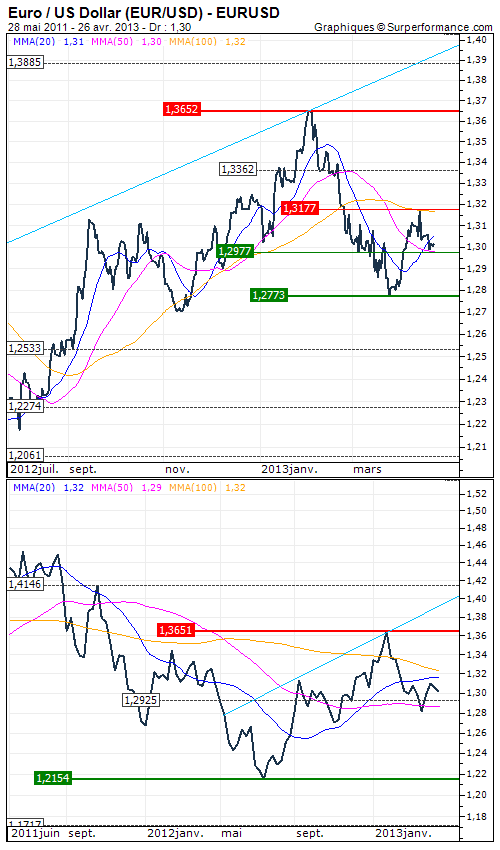Euro / US Dollar (EUR/USD) : Exchange is died quiet
By Mathieu Burbau
Continued contraction in private sector activity in Euroland and the first decline in Germany since November 2012, unexpected drop in IFO business climate in Germany, record unemployment in Spain (27.2%) : European statistics have nothing attractive. Thus, many investors expect a rate cut from the ECB because of these disappointing indicators.
In addition, the U.S. figures also mark time in April, the gap between the monetary policy of the Federal Reserve, based on the creation of money, and that of the ECB does not seem ready to reduce, even in case of a further easing from Frankfurt.
In Italy, Enrico Letta, number 2 of the Democratic Party, the transalpine left, was asked to form a coalition government by the President Giorgio Napolitano, newly re-elected, while long-term rates of peripheral eurozone countries decrease.
Finally, the recent endorsement of the G20 countries to Japanese monetary policy paves the way for a crossing of 100 JPY for one US dollar, which should encourage the flow of capital from the archipelago and will benefit at the single currency.
Graphically, the Euro found a dynamic near to the USD 1.2977 support. We logically maintain our long positions, more in line with the current differential monetary policy, while prices are supported by their 50-day moving average, and we still target a first modest objective at USD 1.3177.




